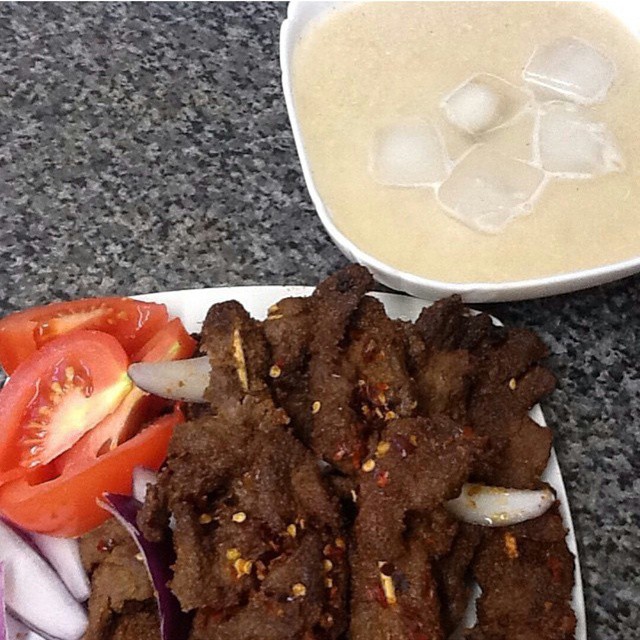Certain factors determine whether or not a person will get infected with TB (Mycobacterium tuberculosis) when he or she is exposed to a TB-infected individual.
Some of the factors depend on the individual who is infected with TB and some depend on the person who is not infected with TB but is exposed to the TB-infected individual.
The factors include:
- Duration of exposure: This refers to the length of time for which the person was exposed to the bacteria, Mycobacterium tuberculosis. The longer the time spent with someone who is infected with TB, the higher the chances of becoming infected with TB.
- Size of the room: If an uninfected person stays in a small room or space with a TB-infected individual, there is a high risk of getting infected.
- The degree of air circulation and ventilation: Staying in a room that is not well ventilated (that is, does not have an adequate number of windows) with an infected person increases the risk of infection. Even if the windows are closed or less in number than is adequate and a fan is on, there is still a high risk of getting infected. This is because the air containing the TB bacteria is just being circulated and recirculated around the room. Good ventilation is important because it helps to reduce the concentration of the TB bacteria in one place which, in turn, reduces the chances of getting infected.
- Concentration of the bacteria (Mycobacterium tuberculosis): The higher the concentration of the TB-causing bacteria in the air, the more likely the chance of person(s) in that vicinity getting infected.
- State of the person’s immunity: Immune status is very important as it determines whether or not an individual will be defenceless against the infection. If an individual’s immune system is weak, then there is a high chance of becoming infected with TB if exposed to Mycobacterium tuberculosis. So, it is important to have a strong immune system.
Some of the things that can weaken the immune system are malnutrition (not eating enough food; eating too much junk food; excessively eating food high in salt, cholesterol, sugar, fat), being overweight or obese, too much stress and working too much, drinking alcohol, exercising excessively, chemotherapy, smoking, uncontrolled diabetes mellitus, organ transplant (because they are given drugs that weaken or suppress their immune system so as to reduce their chances of their body rejecting the transplanted organ), infections like HIV, being an intravenous drug user, using medications very often, to mention a few.
- Frequency of exposure: The number of times a person comes into contact with someone who has an active TB infection is also a key factor. The higher the number of times a person is around the TB-infected individual, the higher the risk of being infected with TB.
- How infectious the infected person is: This refers to the ability of a person who is infected with TB to infect others. And it is determined by the number of the TB-causing bacteria (Mycobacterium tuberculosis) that the infected person releases into the air. The higher the number of TB bacteria released into the air by the infected person, the higher the risk of the uninfected person(s) around getting infected. if the infected person coughs a lot and does not cover his/her mouth and nose when coughing, it increases the infectiousness of the individual with active TB disease. Also, if the person is not taking his/her medication in the appropriate manner as directed by the doctor, then this also increases the person’s infectiousness. So, not taking the drugs for the required length of time; or taking drugs that are not strong enough (not effective) against TB also allow the infected person to infect others.
- Proximity to the infected person: If you stay in close proximity to an individual who is infected with TB, there is an increased risk of being infected with TB.
- Improper handling of specimen: When a sample (for instance, a sputum sample) is collected from an infected person and handled carelessly, there is a high risk of infection occurring. This is because droplets containing the bacteria can be released into the air. The samples from someone who is suspected or confirmed to have TB should be handled carefully. And when it is being worked on, it should be inside a biological safety cabinet.
Not everyone who has TB is able to infect other people with the disease. An individual has to have an active TB disease to be able to spread the infection. People who are infected with TB but have a latent infection cannot infect others.










I’m not sure exactly why but this site is loading very
slow for me. Is anyone else having this issue or is it a
issue on my end? I’ll check back later and see if the problem still exists.
whoah this blog is fantastic i like studying your articles.
Keep up the good work! You understand, lots of persons
are looking round for this information, you can help them greatly.
Wow that was odd. I just wrote an very long comment but after I clicked submit my comment didn’t appear.
Grrrr… well I’m not writing all that over again. Anyways,
just wanted to say superb blog!
I am not positive where you’re getting your info, but good topic.
I needs to spend a while studying much more or working out more.
Thanks for wonderful information I was in search of this information for my
mission.
Unquestionably believe that which you stated. Your favorite
reason appeared to be on the net the simplest thing to be aware of.
I say to you, I certainly get irked while people think about worries that they just
don’t know about. You managed to hit the nail upon the top and
defined out the whole thing without having side-effects , people could take a signal.
Will likely be back to get more. Thanks
What’s up mates, how is all, and what you want
to say about this paragraph, in my view its truly remarkable for me.
It’s remarkable to pay a quick visit this site and reading the views of all friends concerning this piece of
writing, while I am also zealous of getting know-how.
you’re really a excellent webmaster. The web site loading
velocity is incredible. It sort of feels that you’re doing any distinctive trick.
Furthermore, The contents are masterpiece.
you’ve performed a fantastic job in this matter!
constantly i used to read smaller content which also clear
their motive, and that is also happening with this post
which I am reading at this place.
You actually make it seem so easy with your presentation but I find this topic to be actually something that
I think I would never understand. It seems too complicated and very broad for me.
I’m looking forward for your next post, I’ll try to get the hang of it!
Hey there! Someone in my Myspace group shared this site with us
so I came to check it out. I’m definitely enjoying the information. I’m bookmarking and will be tweeting this
to my followers! Wonderful blog and outstanding style and design.
Admiring the hard work you put into your blog and in depth information you offer.
It’s awesome to come across a blog every once in a while that isn’t the same old rehashed
material. Excellent read! I’ve saved your site and I’m adding your RSS feeds
to my Google account.
Thank you for the auspicious writeup. It if truth be told was once a amusement account it.
Glance advanced to far added agreeable from you!
However, how could we keep in touch?
It is actually a nice and useful piece of info. I am glad
that you simply shared this helpful info with us. Please keep
us informed like this. Thank you for sharing.
Can I simply just say what a relief to find a person that genuinely knows
what they are talking about on the internet. You certainly know
how to bring a problem to light and make it important. More and more people
should check this out and understand this side of
your story. It’s surprising you’re not more popular since
you certainly have the gift.
An outstanding share! I’ve just forwarded this onto a friend who
has been doing a little homework on this. And he in fact ordered me lunch simply because I found it for him…
lol. So let me reword this…. Thanks for the meal!!
But yeah, thanx for spending some time to talk about this topic here on your web page.
Very quickly this website will be famous among all blogging and site-building
visitors, due to it’s fastidious articles
I like the helpful information you provide in your articles.
I’ll bookmark your weblog and check again here regularly.
I am quite certain I’ll learn a lot of new stuff right here!
Good luck for the next!
My developer is trying to convince me to move to .net from PHP.
I have always disliked the idea because of the expenses.
But he’s tryiong none the less. I’ve been using WordPress on a variety
of websites for about a year and am concerned
about switching to another platform. I have heard great things about blogengine.net.
Is there a way I can transfer all my wordpress posts into it?
Any help would be really appreciated!
Nice post. I used to be checking continuously this blog and I’m inspired!
Very helpful information specially the final part 🙂 I care for such info a lot.
I was seeking this particular info for a long time.
Thank you and good luck.
Having read this I thought it was really informative.
I appreciate you spending some time and effort to put this
short article together. I once again find myself personally spending way too much time both reading and leaving comments.
But so what, it was still worthwhile!
I have fun with, result in I found just what I used
to be having a look for. You have ended my four day lengthy hunt!
God Bless you man. Have a great day. Bye
Hi, yes this piece of writing is actually pleasant and I have learned lot of things from it on the topic of blogging.
thanks.
What’s up, this weekend is pleasant in favor of me, because this occasion i am reading this great
informative post here at my home.
If you are going for best contents like myself, just pay a
visit this web site daily because it offers quality contents, thanks
Have you ever thought about including a little bit more than just your articles?
I mean, what you say is valuable and all. Nevertheless imagine if you added some great
graphics or videos to give your posts more, “pop”! Your content is excellent but with pics and videos, this site could certainly be one of
the greatest in its niche. Terrific blog!
Post writing is also a excitement, if you be familiar with after that
you can write if not it is complicated to write.
Yes! Finally someone writes about TEKTK77.
You need to be a part of a contest for one of
the finest sites online. I am going to recommend
this blog!
I have fun with, result in I discovered just what I used to
be looking for. You’ve ended my 4 day long hunt!
God Bless you man. Have a nice day. Bye
After I initially left a comment I appear to have clicked on the
-Notify me when new comments are added- checkbox
and now whenever a comment is added I get four emails with the exact same comment.
Perhaps there is a way you can remove me from that service?
Many thanks!
My brother recommended I may like this website. He was totally right.
This put up actually made my day. You can not consider simply how much time I had spent for this information! Thanks!
Very soon this web page will be famous among
all blogging users, due to it’s good posts
Hello! I’m at work browsing your blog from my new
apple iphone! Just wanted to say I love reading your blog
and look forward to all your posts! Keep up the fantastic
work!
Sweet blog! I found it while searching on Yahoo News.
Do you have any tips on how to get listed in Yahoo News?
I’ve been trying for a while but I never seem to get there!
Appreciate it
If some one desires to be updated with most recent technologies after that he must be pay a quick visit this website
and be up to date daily.
Excellent blog you have got here.. It’s hard to
find high quality writing like yours nowadays.
I really appreciate people like you! Take care!!
Touche. Sound arguments. Keep up the good effort.
If some one wishes to be updated with hottest technologies after
that he must be go to see this website and be up to date daily.
It’s perfect time to make some plans for the future and it is time to be happy.
I’ve read this post and if I could I want to suggest you few interesting things
or advice. Perhaps you can write next articles referring to
this article. I wish to read even more things
about it!